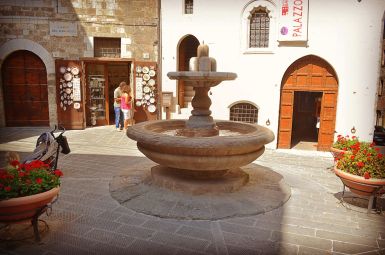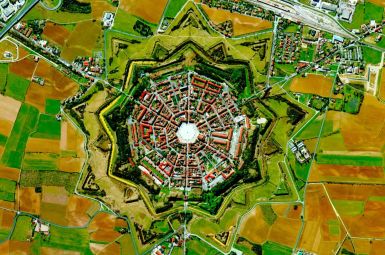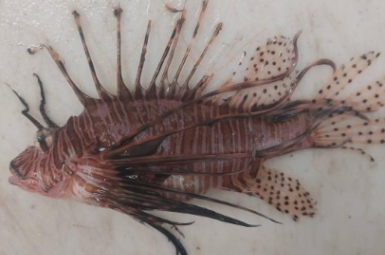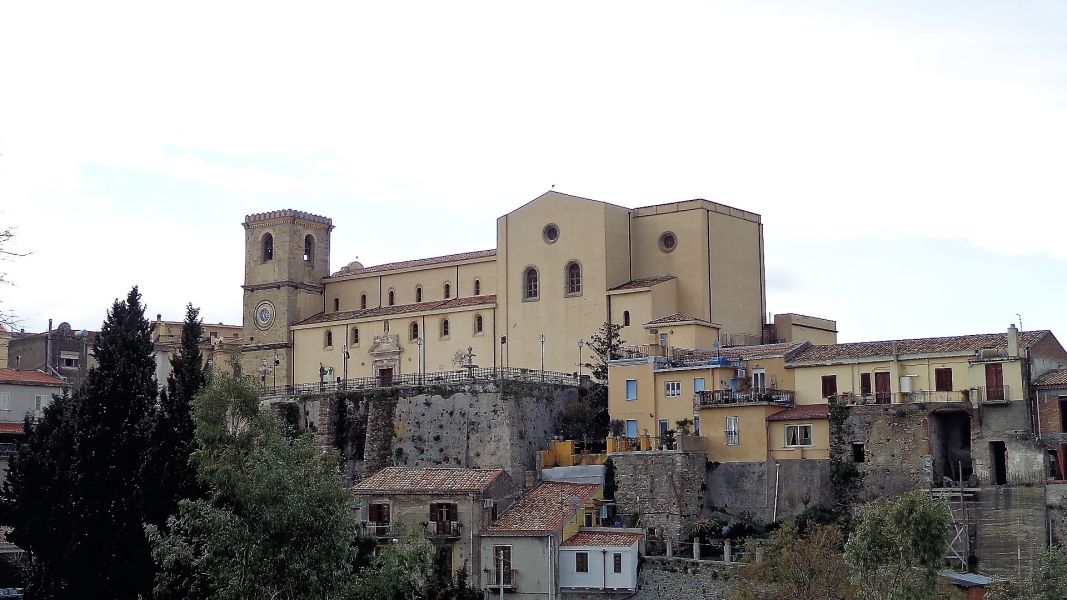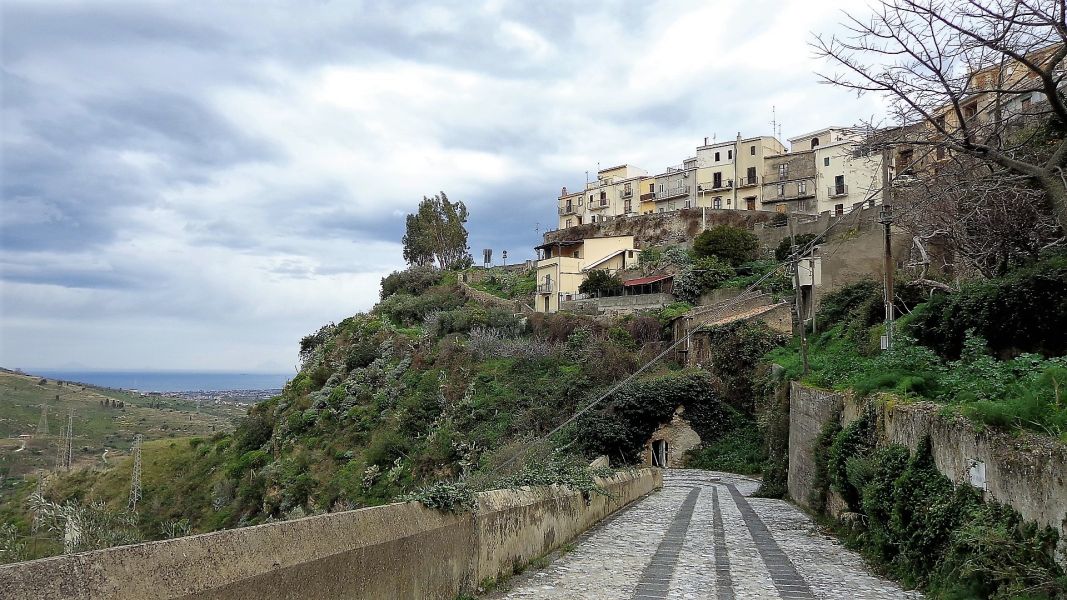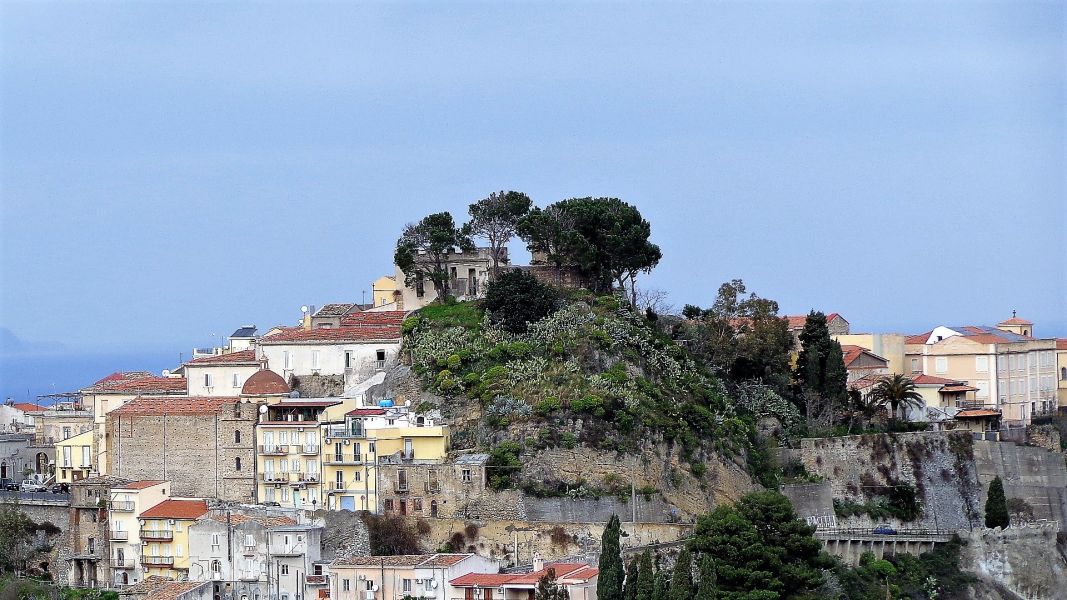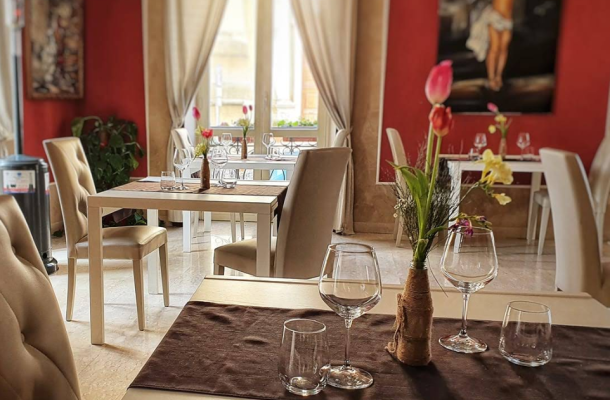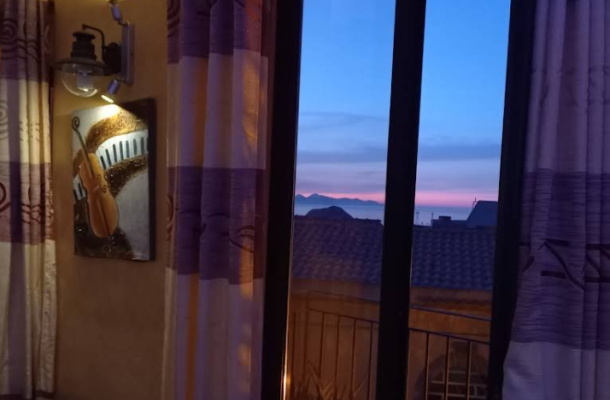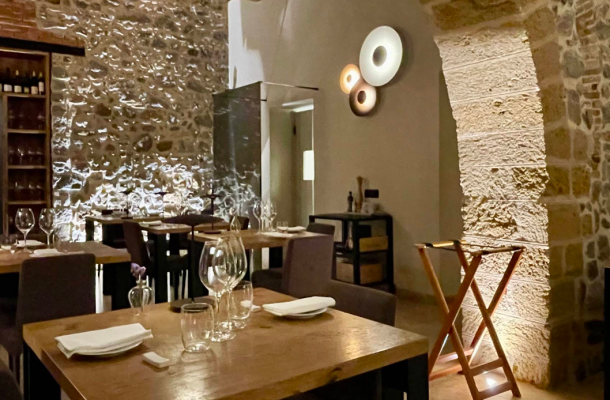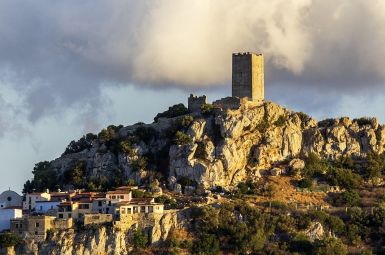
Il Borgo di Castroreale
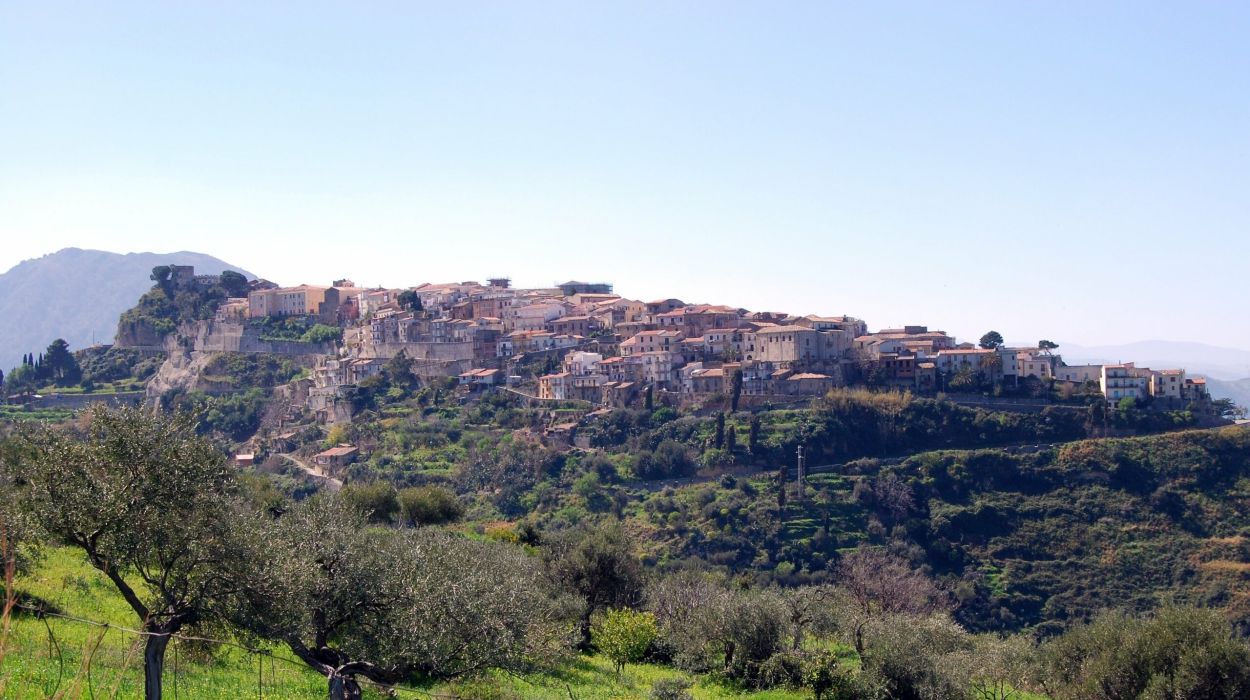
Il Borgo d’Italia
tutto da scoprire ed esplorare
Monumenti
La storia dei primi insediamenti urbani nel territorio vicino all’attuale Castroreale si perde tra i lunghi corridoi della storia e della leggenda. Si racconta che un re venuto dal medioriente decise di fondare una città che chiamò Artemisia, come sua figlia. Successivamente il marito della stessa Artemisia diede origine ad un nuovo centro urbano: Krastos.
Lasciati da parte gli antichi miti, storicamente si considera come data di fondazione del borgo il 1324: anno in cui Federico III d’Aragona ha pensato di premiare il popolo per la sua fedeltà facendo costruire un nuovo castello che secondo alcune fonti storiche era situato proprio nei pressi delle rovine di Artemisia. Attorno al maniero nel corso dei secoli si è sviluppato il borgo. Il nuovo centro ha preso il nome di Castro e poi di Castroreale e ben presto è diventato uno degli snodi più importanti per la difesa della piana di Milazzo e della costa Jonica.
Castroreale non è mai rientrato nel sistema della feudalità ma è stato sempre sotto controllo regio, per questo ha goduto di grandi privilegi e di uno sviluppo economico che ha portato benefici soprattutto alla comunità ebraica, presente nel borgo fino al XV secolo.
Una prima battuta d’arresto nella crescita di Castroreale c’è stata con il terremoto del 1693, che ha causato la demolizione di molti edifici, successivamente ricostruiti con un’impronta barocca. Quasi un secolo dopo, nel 1783, un nuovo terremoto ha devastato il paese e il popolo ha deciso di abbandonare il centro in altura per trasferirsi lungo la costa.
Oggi Castroreale è un piccolo borgo attivo e vivace, ricco di bellissimi monumenti da visitare.
Bafia
Durante il primo periodo della dominazione spagnola nel meridione gli aragonesi scelsero la Sicilia come punto di partenza per la conquista dei territori italiani. In questo contesto, nel ‘Quattrocento, rientra la fondazione di Bafia, costruita da un gruppo di pastori migranti che si fermarono nei pressi di una tintoria di origine greca. Anche il toponimo Bafia riconduce a quest’episodio, infatti bafeus in greco significa proprio tintoria.
Oggi Bafia è frazione del borgo di Castroreale. Il centro poggia su due colline che assumono la singolare forma di due ferri di cavallo incrociati.
Protonotaro
La storia di Protonotaro è avvolta nella nebbia delle incertezze: alcune notizie riportano la presenza di un casale di Protonotaro nella Val Demone, già nell’XI secolo.
Protonotaro però ha anche certamente un legame con una torre squadrata, costruita probabilmente prima del Millecinquecento e visibile ancora oggi su un promontorio roccioso.
Oggi Protonotaro è frazione del borgo di Castroreale e si trova a poco più di 7 km dal centro principale.
Duomo di Castroreale
Il duomo di Castroreale è dedicato a Santa Maria Assunta ed è stato costruito nella prima metà del Milleseicento. Dell’esterno colpiscono subito il maestoso portale in marmo e la torre campanaria, che si erge alla destra del corpo architettonico principale. Il primo è contraddistinto da uno spiccato manierismo con decori in stile barocco, il secondo è una torre a base quadrata ed orologio a vista.
Sulla facciata, accanto al portale, si trovano poi due colonne su cui siedono le statue di due angeli che guardano all’Assunta, posta più in alto in una nicchia.
Il duomo di Castroreale è una delle chiese più belle della provincia di Messina e custodisce un grande patrimonio d’arte sacra. L’interno è a pianta basilicale con sedici colonne che dividono l’ambiente in tre navate, ovunque si trovano opere d’inestimabile valore, come le statue in marmo realizzate da Antonello Gagioni, Andrea Calamech e Rinaldo Bonanno ma anche la cantorìa in legno intarsiato, la facciata dell’organo e il coro realizzato in legno di noce.
Una piccola curiosità riguarda la meridiana che si trova sul pavimento della chiesa, è stata realizzata nel 1854 dal professore Nicola Perroni Basquez ed è una delle sette meridiane costruite in Sicilia tra il 1801 e il 1896, attualmente è l’unica funzionante.
Chiesa della Candelora
Lungo l’antica via di Artemisia si affaccia la chiesa della Candelora. Si pensa che probabilmente questo luogo di culto in origine fosse la cappella del castello di Federico III d’Aragona e conserva ancora i tratti tipici delle costruzioni sacre cinquecentesche.
La chiesa si presenta con un’unica navata e quattro altari, in alto si trova una cupola che sormonta l’abside e termina con un lanternino cieco.
La chiesa della Candelora era ricca di opere di grande prestigio, come pale d’altare e opere in cartapesta ma anche un pavimento in mosaico realizzato nel Milleseicento. Purtroppo un sisma nel 1908 ha devastato la struttura e ha danneggiato fortemente il patrimonio artistico; solo un secolo dopo, nel 2003, un restauro ha permesso la riapertura al culto.
Oggi l’opera più importante presente in questa chiesa è la Tribuna in legno che viene attribuita a Giovanni Siracusano. La Tribuna è stata realizzata nel XVIII secolo con la tecnica dell’intarsio ed è interamente ricoperta d’oro zecchino. Tra i vari decori presenti sulla tribuna si possono ammirare sei colonne con tavolette raffiguranti il culto della Vergine e la storia delle candele benedette.
Le piazze di Castroreale
Le piazze di Castroreale sono i centri nevralgici di questo borgo messinese, sono i luoghi su cui si affacciano i principali monumenti della città: narratori eccezionali della storia di Castroreale.
Le principali piazze sono tre: la piazza della Aquile su cui sorge la Chiesa Madre, piazza della Mosquita dove un tempo si trovava la sinagoga e il quartiere ebraico e piazza del Peculio, oggi piazza Pertini.
Piazza del Peculio prendeva il nome dal peculio frumentario, un edificio costruito nel 1668 ed utilizzato come deposito di cereali e prodotti agricoli e con funzione di calmiere, al fine di mantenere un equilibrio dei prezzi che permetteva al popolo di acquistare anche durante i periodi di carestia, quando i prezzi dei generi alimentari subivano un esponenziale aumento.
Nel 1924 sull’area di quest’edificio è stato costruito un palazzo in stile liberty, che attualmente ospita gli uffici comunali.
Un’altra istituzione importante del passato che si affaccia su questa piazza è il Monte della Pietà, fondato per volere della confraternita di San Leone con lo scopo di tutelare la povera gente dagli approfittatori e dagli strozzini. Il Monte della Pietà infatti concedeva prestiti in cambio di pegni. Legata a quest’edificio è la fontana che si trova poco più avanti, realizzata nel 1873, con un incisione in latino che dice: “gli antichi hanno posto in questo luogo il Monte della Pietà e la Fonte: uno toglie la fame, l’altra la sete.”
A Piazza della Mosquita, tra i resti della Giudecca e della sinagoga ebraica, si può vedere anche la torre di Federico II d’Aragona, l’ultimo tassello dell’antico castello del ‘Trecento ad essere giunto fino ai nostri giorni.
Curiosità
La Giudecca
La presenza storica di una comunità ebraica in un borgo desta sempre grande curiosità e sete di conoscenza.
A Castroreale la storia racconta di un quartiere ebraico florido e vivo che ha potuto beneficiare di riflesso dei privilegi di un borgo di demanio regio, garantendosi una dignitosa crescita economica.
Alla storia della Giudecca di Castroreale viene messo un punto nel XV secolo, quando i suoi abitanti vengono scacciati dal borgo siciliano.
Oggi della presenza del popolo ebraico nel borgo restano i nomi delle strade e della piazza dove si trovava la sinagoga, forse qualche strascico nei cognomi cittadini e poco più. Molti degli edifici che costituivano il quartiere ebraico in seguito hanno cambiato destinazione d’uso: è il caso per esempio del Monte della Pietà, diventato un banco dei pegni d’ispirazione cristiana.
Della sinagoga oggi rimane in piedi solo un arco ma a noi resta comunque il fascino immutato di una delle religioni e dei popoli più antichi del pianeta, costretti dalla storia ad un continuo peregrinare.
U Signori Longu – Il Cristo Lungo
I cittadini di Castroreale sono particolarmente devoti alla festa de U Signori Longu .
Come spesso accade la storia del Cristo Lungo è legata ad un antico miracolo, giunto fino a noi attraverso la voce del popolo e sicuramente abbellito dal fervente sentimento religioso e dai colori dei miti e delle leggende.
Si racconta che nel 1854 una terribile epidemia di peste colpì Messina, provocando più di tremila vittime. In molti tra coloro che non vennero contagiati scelsero di rifugiarsi nelle campagne o nei borghi vicini. Tra questi c’era la signora Giuseppina Vadalà, moglie di Orazio Nicosia, un messinese che viveva a Castroreale per lavoro. La donna giunse nel borgo che aveva già evidenti segni della malattia e questo gettò nello sconforto tutta la comunità. Per scongiurare il diffondersi dell’epidemia a Castroreale il popolo si affidò alla preghiera e all’intercessione del Cristo Lungo. Il 23 agosto 1854 una processione sfilò per le strade del paese e portò la statua del Cristo sotto il balcone della famiglia Nicosia, il signor Orazio lasciò il capezzale della moglie moribonda per inginocchiarsi davanti alla statua del Cristo ed implorò il miracolo. Quando rientrò in casa trovò la moglie seduta nel letto e senza più segni di malattia. Quell’anno la peste non fece nessuna vittima a Castoreale e da allora, in segno di eterna gratitudine, la processione si ripete il 25 agosto di ogni anno, portando nel borgo messinese un numero sempre più grande di fedeli e curiosi.
La festa di U Signori longu dura tre giorni, si apre il 23 agosto con la processione che porta la statua del Crocefisso dalla chiesa di sant’Agata alla chiesa madre, dove resta fino al 25 agosto per poi essere riportata indietro. La processione è l’evento più importante di questa festa perchè la statua del Cristo e la sua croce sono a grandezza naturale, entrambe vengono issate su un palo e arrivano ad essere alte 14 m, superando in altezza tutte le case e gli edifici del centro storico, tranne la chiesa madre.
U Signori Longu viene portato in processione per le strade del paese, tenuto in equilibrio da una serie di pertiche e ad ogni salita e discesa si resta con il fiato sospeso. Per questo la processione si muove con lentezza e per la stessa ragione è uno dei riti più suggestivi e belli del meridione italiano.
Personaggi
Carmelo Aliberti
Carmelo Aliberti è un poeta e un critico letterario italiano, nato a Bafia, frazione di Castroreale, nel 1943.
È stato un docente di lettere presso i licei di Castroreale e cultore di letteratura all’Università di Messina.
Ha pubblicato numerose raccolte poetiche, un poemetto, diversi saggi di critica letteraria e inoltre ha fondato la rivista Cultura ‘Novecento.
Per la sua attività letteraria e culturale nel 1990 il Presidente della Repubblica lo ha insignito dell’onorificenza di “Benemerito della scuola, della cultura e dell’arte” e nel 2008 ha ricevuto il premio nazionale per la critica “Giorgio La Pira”.
Pina Menichelli
Giuseppa Iolanda Menichelli ha calcato i palcoscenici italiani fin dal 1907 con il nome d’arte di Pina Menichelli. È nata nel 1890 a Castroreale, da una famiglia con alle spalle una lunga tradizione di attori.
La sua carriera è iniziata a teatro, proprio nel 1907, ma dal 1913 ha iniziato ad interpretare numerosi film cinematografici.
Il suo carattere e il suo aspetto sensuale l’hanno portata a rappresentare la diva del cinema muto italiano per eccellenza, diventando in poco tempo una grande stella.
Dopo aver interpretato ‘La seconda moglie’(1922) e ‘La donna, l’uomo e la biondina’ (1923) ha abbandonato le scene per dedicarsi al marito e ai figli.
Nonostante il suo abbagliante splendore e il successo avuto come attrice il pubblico l’ha pian piano dimenticata. È morta a Milano nel 1984 all’età di novantatre anni.
Ricette Tipiche
I dolci della tradizione: il riso nero e i biscotti della badessa
A Castroreale le tradizioni hanno il sapore dolce e le origini antiche. Sono due i principali ‘piatti’ che contraddistinguono questo borgo messinese, entrambi sono due dolci: il riso nero e i biscotti della badessa.
Riso Nero.
Ingredienti
– 1 kg di riso:
– 400 gr di mandorle;
– 1 kg di zucchero;
– 200 gr di cioccolato fondente a pezzi;
– Cannella in polvere qb;
– A piacere canditi, cotognata e confettini d’argento.
Preparazione:
Far bollire in un tegame di coccio le mandorle, fino a farle diventare quasi nere e poi tritarle sino ad arrivare ad ottenere un composto cremoso ed omogeneo, simile ad una marmellata.
Bollire il riso e lasciarlo al dente, unire: un kg di zucchero, la marmellata con un po’ di brodo del riso, pezzi di cioccolato fondente, una spolverata di cannella e cuocere per dieci minuti. Quando sarà pronto il riso potrà essere disposto in un piatto piano e spolverato nuovamente con la cannella. A piacere si possono aggiungere come guarnizione: alcuni canditi, della cotognata a listarelle e confettini d’argento.
Questo dolce è tipico del Natale, il profumo delle mandorle tostate rallegra i cuori dei castrensi e annuncia a tutti l’avvicinarsi di uno dei periodi più belli dell’anno.
I biscotti della badessa o biscotti castrensi vengono prodotti solo in questo borgo siciliano e la ricetta ancora oggi è custodita gelosamente dai fornai e dai pasticceri del paese.
Questi biscotti sono stati ideati dalle suore clarisse: monache di clausura che hanno vissuto nel convento di Santa Maria degli Angeli fino al 1866.
Sugli ingredienti si sa poco ma si è certi che sono privi di latte e uova. Ci sono due varianti: la prima morbida e calda, farcita con marmellata o cioccolato; la seconda più secca, adatti ad essere inzuppati nel latte caldo oppure nella granita di limone.
A Castroreale questi biscotti vengono venduti nei negozietti tipici, ma ogni anno ad agosto si tiene la tradizionale ‘ Sagra del biscotto castriciano’, un evento imperdibile per chi ama questa leccornia locale.
